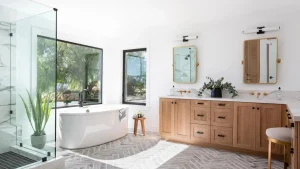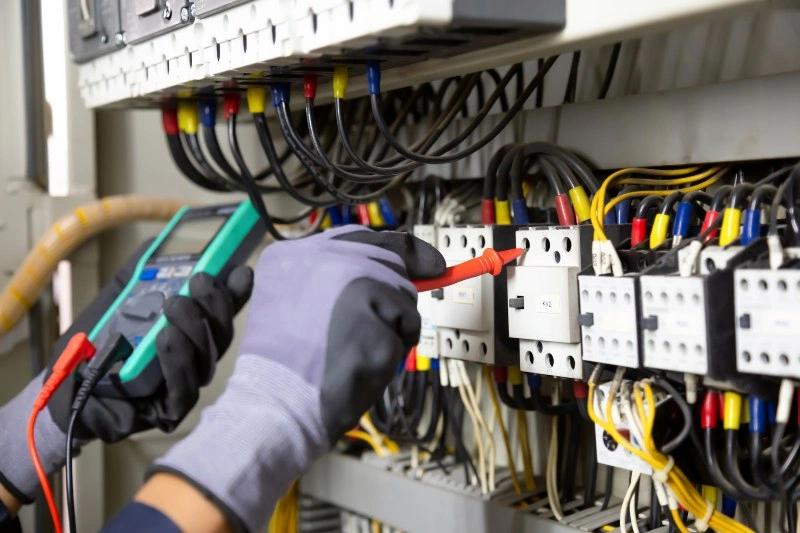In our fast-moving economy, cost of bathroom renovation involves more than just enhancing a home’s look; it also plays a role in boosting the local economy. As homeowners update their bathrooms, they create jobs and have a significant impact on local markets. It’s important to consider both direct costs, like materials and labor, and indirect costs, such as community health benefits and eco-friendly practices. Understanding these elements not only reveals the financial investment but also highlights their broader effects on community growth and housing trends.
Key Takeaways
- Bathroom renovations stimulate local economy by increasing demand for tradespeople and materials.
- Labor costs typically constitute the largest portion of renovation expenses.
- Efficient planning and budgeting are crucial for managing renovation costs effectively.
- Community and property values can benefit from upgraded bathroom facilities.
- Future trends emphasize sustainable and smart design choices to reduce long-term costs and environmental impact.
The Rising Demand for Bathroom Renovations
In recent years, the allure of modern and efficient living spaces has greatly increased the demand for bathroom renovations. Homeowners seek to enhance not just the functionality but also the aesthetic appeal of their bathrooms. This trend reflects a broader desire to create spaces that not only meet practical needs but also foster a sense of personal sanctuary and retreat within the home.

Breakdown of Renovation Costs
Understanding the cost of bathroom renovation requires a detailed breakdown of expenses that can vary greatly depending on several factors. These include labor, materials like tiles and fixtures, and any necessary permits. Labor typically consumes the largest portion, while the choice of high-end materials can greatly influence the total cost. Efficient planning and budgeting are essential for managing these expenses effectively within your community.
Impact on Community and Economy
Renovation projects, particularly those involving essential spaces like bathrooms, can greatly impact local communities and economies. By stimulating demand for local tradespeople and materials, these projects help circulate money within the community, supporting small businesses and fostering job creation. Additionally, upgraded facilities can enhance property values and attract new residents or investors, further strengthening the economic fabric of the area.
Strategies to Afford Renovations
One might wonder how feasible it is to undertake bathroom renovations without breaking the bank. Consider these practical strategies:
- Budget Planning: Carefully calculate expenses and set a realistic budget.
- Incremental Upgrades: Tackle renovations in phases to spread costs over time.
- DIY Projects: Manage simpler tasks yourself to save on labor costs.
- Material Choices: Opt for cost-effective materials that still enhance aesthetics and functionality.
Future Trends in Bathroom Design
As we look to the future, bathroom design trends are increasingly leaning towards sustainability and technology integration. Smart fixtures that reduce water usage and energy-efficient lighting are becoming standard. Materials are chosen based on both functionality and environmental impact. This approach not only respects the planet but also reduces the long-term cost of bathroom renovation, fostering a sense of community and responsibility.
Frequently Asked Questions
How Long Does a Typical Bathroom Renovation Take to Complete?
A typical bathroom renovation can take anywhere from two to six weeks to complete, depending on the scope of work, availability of materials, and the efficiency of the contractors involved.
Are DIY Bathroom Renovations Advisable for Beginners?
DIY bathroom renovations can be challenging for beginners due to the complexity of plumbing and tiling. It’s advisable to start with smaller projects or consult professionals to avoid costly mistakes and guarantee quality results.
What Are Common Unexpected Challenges in Bathroom Renovations?
Common unexpected challenges in bathroom renovations include hidden water damage, outdated plumbing, mold issues, and inaccuracies in initial cost estimates, often leading to budget overruns and extended project timelines.
How Can Renovations Affect a Home’s Resale Value?
Bathroom renovations can greatly enhance a home’s resale value by modernizing outdated features and improving functionality, which appeals to potential buyers looking for properties that require minimal additional investment.
What Are Eco-Friendly Options for Bathroom Renovations?
Eco-friendly bathroom renovations can include installing low-flow toilets and showers, using sustainable materials like bamboo for cabinetry, and opting for LED lighting to reduce energy consumption and promote environmental sustainability.
Conclusion
To summarize, the demand for bathroom renovations reflects broader societal trends towards enhancing living spaces and supporting economic growth. Thorough budgeting is essential given the variability in labor and material costs. By prioritizing sustainable practices, these renovations can greatly boost property values and improve quality of life, thereby fulfilling community needs and fostering a sense of civic responsibility. Future trends will likely emphasize eco-friendliness and innovative design, continuing to influence local economies and lifestyles.
Also Read: Choosing a Corporate Caterer for Your Team




